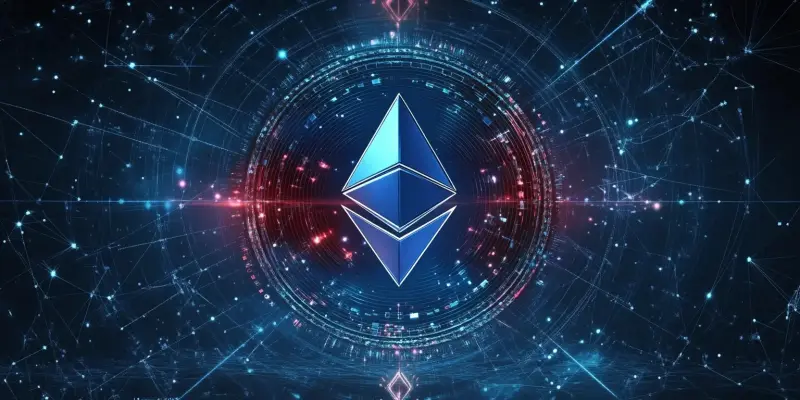Ethereum (CRYPTO: ETH) has long faced criticism for its high gas fees and slow transaction times. Despite its standing as a pioneering force in decentralized finance (DeFi), these inefficiencies have turned many users and developers towards more cost-effective alternatives. Recent technological upgrades and leadership changes aimed to address these perennial issues, raising the question of whether Ethereum can reclaim its former dominance in the blockchain space or if it will continue to lag behind its primary competitor, Solana (CRYPTO: SOL).
Technological Enhancements and Their Impact
A significant improvement in Ethereum’s operational efficiency is evident. As of March 14, gas fees for a token swap on the Ethereum network have dropped to approximately $0.52, with transaction times reduced to around 30 seconds. This data shows a considerable 85% decrease in transaction costs compared to five years ago. Such reduction in gas fees is credited to various technological enhancements, including the recent Dencun upgrade, which has been in place for over a year. These improvements are indicative of Ethereum’s commitment to refining its network’s capability to handle higher transaction loads.
These advancements have made Ethereum more attractive for investing and developing DeFi applications. Lower transaction costs and quicker processing times are crucial for user satisfaction, as no user would opt for costlier or slower transactions when more efficient options are available. The dramatic decrease in transaction costs, combined with improved speed, has the potential to revitalize interest in Ethereum, making it a more viable option for a broader range of blockchain activities. However, despite these substantial upgrades, Ethereum’s price has seen a 32% drop over the past three years, indicating that technological improvements alone might not be sufficient to sway user sentiment and market valuation.
The Historical Approach and Layer-2s Complexity
Ethereum’s past strategies to alleviate high gas fees involved promoting the creation of smaller but auxiliary blockchains known as Layer-2s. Designed to enhance the handling of transaction volumes, Layer-2s offload a portion of the transaction load from the main Ethereum chain to run more efficiently. Layer-2 solutions use methods such as rollups to batch multiple transactions into a single chain update, thus reducing congestion and improving throughput. However, this approach, while technically sound, came with its own set of challenges.
The complexity of Layer-2 solutions became a significant barrier to adoption. For many investors and even developers, understanding the necessity, functionality, and specific implementation details of Layer-2 technology felt overly technical and cumbersome. Consequently, the steep learning curve associated with Layer-2s deterred a considerable segment of potential users, who then turned towards more straightforward and user-friendly alternatives. This complexity highlighted an essential issue: technological superiority alone could not compensate for the complexity of user experience.
The Competitive Edge of Solana
Ethereum’s main competitor, Solana, offers a formidable challenge owing to its transaction efficiency. Solana’s transactions are both cheaper and faster, with a token swap costing only a few pennies and closing within a matter of seconds under normal conditions. The stark contrast in transaction efficiency between Solana and Ethereum positions Solana as the more accessible and attractive blockchain platform for both investors and developers. Solana’s architecture, designed to natively scale, eliminates the need for auxiliary solutions like Layer-2s, ensuring a simpler and more seamless user experience.
This technological advantage has secured Solana a strong foothold in various growth segments, particularly in niche markets such as meme coins. Investors in these high-risk, high-reward tokens are heavily influenced by transaction costs and speeds. The lower costs and faster transaction times offered by Solana make it the preferred platform in these segments, further accentuating the importance of operational efficiency in blockchain technology. Hence, Solana’s inherent advantages are not only technical but also strategic, catering to the specific needs and preferences of its user base.
Broader Implications for Growth Segments
The efficiency and simplicity of Solana extend beyond niche markets into more serious and strategic growth segments, such as developing infrastructure for artificial intelligence (AI) agents. For developers in the realm of AI, the high costs associated with basic transactions on Ethereum could present a significant obstacle. In contrast, Solana’s lower transaction fees and faster processing times offer a more viable and attractive option for conducting and scaling AI-driven applications. This potential shift towards Solana highlights the broader implications of transaction efficiency for technology adoption and growth.
Despite Ethereum’s commendable efforts at reducing transaction costs and addressing user concerns, significant distinctions in efficiency remain compared to its rival. Ethereum’s higher transaction fees could impede its attractiveness to both emerging and established sectors looking for cost-effective and efficient blockchain solutions. The necessity for routine enhancements and persistent user education on Ethereum’s part contrast with Solana’s straightforward appeal, demonstrating the challenge Ethereum faces in maintaining and expanding its market presence.
The Challenge of Investor Perception
Ethereum (CRYPTO: ETH) has long been criticized for its high gas fees and sluggish transaction speeds. Although it remains a trailblazer in the decentralized finance (DeFi) sector, these persistent issues have driven many users and developers towards more cost-efficient options. In response to these challenges, Ethereum has undertaken significant technological upgrades and seen changes in its leadership. These adjustments aim to tackle its core inefficiencies, prompting speculation about whether Ethereum can regain its former dominance in the blockchain arena or if it will continue to fall behind its main rival, Solana (CRYPTO: SOL). Solana has gained traction due to its lower costs and faster transactions, positioning itself as a formidable competitor to Ethereum. As the blockchain landscape evolves, the effectiveness of Ethereum’s recent changes will be crucial in determining its future standing. The ongoing battle between Ethereum and Solana highlights the broader race within the crypto community to offer the most efficient, scalable, and user-friendly platform.

